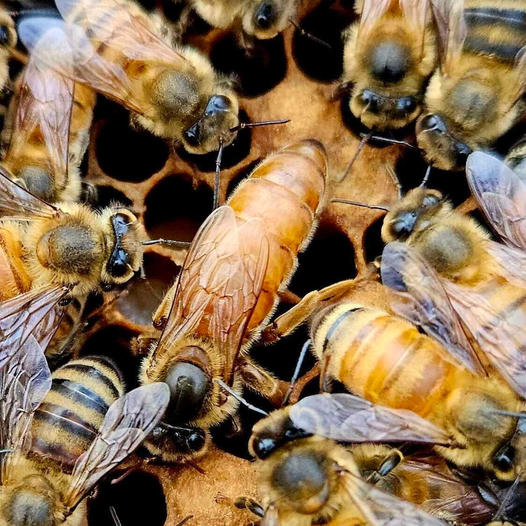
Raising queen honey bees is an intricate and fascinating process that requires careful planning, attention to detail, and a deep understanding of bee biology. Whether you’re a hobbyist beekeeper looking to expand your hive or a commercial apiarist interested in breeding queens for sale, the following guide offers insights into successfully raising queen honey bees.
Understanding Queen Honey Bees
The queen bee plays a crucial role in the hive, being the only female that reproduces. She lays both fertilized (worker bees) and unfertilized eggs (drones). A healthy queen is vital for the strength and productivity of the hive.
A lot of people do not understand that the Queen really is not in charge of the colony, but rather the worker bees are. The Queen honey bee serves the role of laying eggs that produce both new workers (female) and drone (male) bees depending on the needs of the colony.
Once the worker bees decide that the Queen bee is not living up to expectations – it’s off with her head!
Selecting a Method for Raising Queens
There are several methods for raising queen bees, including the grafting method, the Miller method, and the Jenter kit. Each method has its own set of advantages and challenges, and choosing the right one depends on your experience level, resources, and the scale of your queen-rearing operation.
The most important part is going slow, taking your time, and realizing that when it comes to raising Ohio Queen Bees you’re going to make mistakes.
Preparing the Hive
Preparation is key to successful queen rearing. This involves ensuring that the hive is strong, healthy, and populous enough to support the raising of new queens. It may also include setting up a separate starter hive for rearing queens.
Grafting and Incubation
Grafting involves transferring larvae from worker cells to special queen cells. This is a delicate process that requires a steady hand and keen eyesight. Once grafted, the queen cells are placed in a starter hive, where the worker bees will feed and nurture the developing queens.
Mating
After the queens emerge, they need to mate to become fertile. This usually involves allowing the queens to fly out of the hive on mating flights. Creating a conducive environment for safe mating flights is critical, as queens need to mate with multiple drones to ensure genetic diversity and vitality.
Introducing New Queens to Hives
Introducing a new queen to an existing hive requires careful management to ensure acceptance by the worker bees. This might involve isolating the queen in a cage within the hive until the workers become accustomed to her pheromones.
Monitoring and Management
Throughout the process, it’s important to monitor the health and development of the queen larvae, the condition of the mating nucs, and the acceptance of new queens into hives. Good record-keeping can help track the success of different methods and identify areas for improvement.
Ensuring Genetic Diversity
For the health and longevity of your apiary, it’s crucial to maintain genetic diversity among your queen stock. This may involve exchanging queens with other beekeepers or introducing new genetic lines from reputable breeders.
Conclusion
Raising queen honey bees is a rewarding venture that can improve the productivity and sustainability of your beekeeping operation. It requires a combination of knowledge, skill, and patience, but the rewards of seeing a new queen successfully take over and strengthen a hive are unparalleled. As you gain experience, you’ll develop a deeper understanding of the nuances of queen rearing, contributing to the success and resilience of your bee colonies.
If you need a queen honey bee in Ohio check our store out! As always, it is free to call us and we will do our best to answer all of your questions.
We have a lot of resources available to help if you are a new beekeeper… check us out some of our helpful articles or our beginner beekeeper’s guide.

